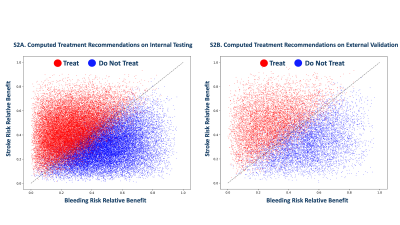AI Research
NCCN Policy Summit Explores Whether Artificial Intelligence Can Transform Cancer Care Safely and Fairly

WASHINGTON, D.C. [September 9, 2025] — Today, the National Comprehensive Cancer Network® (NCCN®)—an alliance of leading cancer centers devoted to patient care, research, and education—hosted a Policy Summit exploring where artificial intelligence (AI) currently stands as a tool for improving cancer care, and where it may be going in the future. Subject matter experts, including patients and advocates, clinicians, and policymakers, weighed in on where they saw emerging success and also reasons for concern.
Travis Osterman, DO, MS, FAMIA, FASCO, Director of Cancer Clinical Informatics, Vanderbilt-Ingram Cancer Center—a member of the NCCN Digital Oncology Forum—delivered a keynote address, stating: “Because of AI, we are at an inflection point in how technology supports the delivery of care to our patients with cancer. Thoughtful regulation can help us integrate these tools into everyday practice in ways that improve care delivery and support oncology practices. The decisions we make now will determine how AI innovations serve our patients and impact clinicians for years to come.”
Many speakers took a cautiously optimistic tone on AI, rooted in pragmatism.
“AI isn’t the future of cancer care… it’s already here, helping detect disease earlier, guide personalized treatment, and reduce clinical burdens,” said William Walders, Executive Vice President, Chief Digital and Information Officer, The Joint Commission. “To fully realize the promise of AI in oncology, we must implement thoughtful guardrails that not only build trust but actively safeguard patient safety and uphold the highest standards of care. At Joint Commission, our mission is to shape policy and guidance that ensures AI complements, never compromises, the human touch. These guardrails are essential to prevent unintended consequences and to ensure equitable, high-quality outcomes for all.”
Panelists noted the speed at which AI models are evolving. Some compared its potential to previous advances in care, such as the leap from paper to electronic medical records. Many expressed excitement over the possibilities it represents for improving efficiency and helping to support an overburdened oncology workforce and accelerate the pursuit of new cures.
“Artificial intelligence is transforming every industry, and oncology is no exception,” stated Jorge Reis-Filho, MD, PhD, FRCPath, Chief AI and Data Scientist, Oncology R&D, AstraZeneca. “With the advent of multimodal foundation models and agentic AI, there are unique opportunities to propel clinical development, empowering researchers and clinicians with the ability to generate a more holistic understanding of disease biology and develop the next generation of biomarkers to guide decision making.”
“AI has enormous potential to optimize cancer outcomes by making clinical trials accessible to patients regardless of their location and by simplifying complex trial processes for patients and research teams alike. I am looking forward to new approaches for safe evaluation and implementation so that we can effectively and responsibly use AI to gain maximum insight from every piece of patient data and drive progress,” commented Danielle Bitterman, MD, Clinical Lead for Data Science/AI, Mass General Brigham.
She continued: “As AI becomes integrated into clinical practice, stronger collaborations between oncologists and computer scientists will catalyze advances and will be key to directly addressing the most urgent challenges in cancer care.”
Regina Barzilay, PhD, School of Engineering Distinguished Professor for AI and Health, MIT, expressed her concern that adoption may not be moving quickly enough: “AI-driven diagnostics and treatment has potential to transform cancer outcomes. Unfortunately, today, these tools are not utilized enough in patient care. Guidelines could play a critical role in changing this status quo.”
She illustrated some specific AI technologies that she believes are ready to be implemented into patient care and asserted her wishes for keeping up with rapidly progressing technology.
Some of the panel participants raised issues about the potential challenges from AI adoption, including:
- How to implement quality control, accreditation, and fact-checking in a way that is fair and not burdensome
- How to determine appropriate governmental oversight
- How medical and technology organizations can work together to best leverage the expertise of both
- How to integrate functionality across various platforms
- How to avoid increasing disparities and technology gaps
- How to account for human error and bias while maintaining the human touch
“Many similar problems have been solved in different application environments,” concluded Allen Rush, PhD, MS, Co-Founder and Board Chairman, Jacqueline Rush Lynch Syndrome Cancer Foundation. “This will take teaming up with non-medical industry experts to find the best tools, fine-tune them, and apply ongoing learning. We need to ask the right questions and match them with the right AI platforms to unlock new possibilities for cancer detection and treatment.”
The topic of AI and cancer care was also featured in a plenary session during the NCCN 2025 Annual Conference. Visit NCCN.org/conference to view that session and others via the NCCN Continuing Education Portal.
Next up, on Tuesday, December 9, 2025, NCCN is hosting a Patient Advocacy Summit on addressing the unique cancer care needs of veterans and first responders. Visit NCCN.org/summits to learn more and register.
# # #
About the National Comprehensive Cancer Network
The National Comprehensive Cancer Network® (NCCN®) is marking 30 years as a not-for-profit alliance of leading cancer centers devoted to patient care, research, and education. NCCN is dedicated to defining and advancing quality, effective, equitable, and accessible cancer care and prevention so all people can live better lives. The NCCN Clinical Practice Guidelines in Oncology (NCCN Guidelines®) provide transparent, evidence-based, expert consensus-driven recommendations for cancer treatment, prevention, and supportive services; they are the recognized standard for clinical direction and policy in cancer management and the most thorough and frequently-updated clinical practice guidelines available in any area of medicine. The NCCN Guidelines for Patients® provide expert cancer treatment information to inform and empower patients and caregivers, through support from the NCCN Foundation®. NCCN also advances continuing education, global initiatives, policy, and research collaboration and publication in oncology. Visit NCCN.org for more information.
AI Research
Augment Raises $85 Million for AI Teammate for Logistics
Augment raised $85 million in a Series A funding round to accelerate the development of its artificial intelligence teammate for logistics, Augie.
AI Research
The race to power artificial intelligence

WASHINGTON (TNND) — The United States is experiencing a significant increase in electricity demand due to the rapid growth of artificial intelligence technologies. According to an analysis from Berkeley Lab, data centers currently consume about 4.4% of all U.S. electricity, a figure expected to rise sharply as AI models require more power. By 2028, over half of this consumption could be attributed to AI alone, equivalent to powering 22% of all U.S. households.
Most of this electricity is generated from fossil fuels, with data centers operating on grids that emit 48% more carbon than the national average, said a report from MIT Technology Review. While companies like Meta and Microsoft are investing in nuclear power, natural gas remains the primary energy source.
In response to the growing demand, President Donald Trump signed an executive order in April directing the Department of Energy to expedite emergency approvals for power plants to operate at full capacity during peak demand. The order also mandates the development of a uniform methodology to assess reserve margins and identify critical power plants essential for grid reliability.
Despite these measures, concerns remain about the U.S.’s ability to provide the 24/7 power required by AI, especially as China implements plans to ensure reliable electricity for data centers. According to reporting from Forbes, “the U.S. does not have a coherent and continuing energy plan of any type. China’s central planning allows for development and sustainability, while the U.S. approach to energy changes every four years”.
AI Research
House bill targets rising rural utility costs from AI data centers

Surging utility bills linked to artificial intelligence data centers would get a closer look from a trio of federal agencies under a new bipartisan bill in the House.
The Unleashing Low-Cost Rural AI Act from Reps. Jim Costa, D-Calif., and Blake Moore, R-Utah, would require the Energy, Interior and Agriculture departments to examine the effect AI data center buildouts are having on rural America.
“AI Data Centers are expanding rapidly and using more energy and water than entire cities. That energy demand is driving up utility costs for consumers,” Costa said in a press release Thursday. “My legislation ensures we take a hard look at how this growth impacts rural communities that are powering the AI industry, and make sure families aren’t left paying the price.
“But at the same time,” he continued, “it’s important that rural communities are not left behind in the new opportunities that AI data centers will provide for agricultural sciences and an improved ability to compete in this modern era.”
The rapid construction of AI data centers across the country — especially in rural areas — has led to a spike in energy demand that has dramatically driven up utility costs for consumers. The lawmakers’ press release cited a stat from PJM — the world’s largest energy market, spanning 13 states — that said data centers have led to an additional $9.3 billion in costs for ratepayers.
The AI Action Plan released by President Donald Trump in July featured several callouts to the importance of expanded energy capacity through streamlined permitting and fewer environmental regulations. The plan also sought to make federal lands “available for data center construction and the construction of power generation infrastructure for those data centers.”
Moore said in the press release that Utah is “a prime location” for AI infrastructure and data centers, but “cementing” the state’s innovation bona fides “will require identifying rural areas ready for data expansion, streamlining permitting for new energy projects, and promoting the co-location of data centers with energy facilities.”
“These efforts will power our growing digital demands without passing costs on to families,” he added. “I’m grateful to partner with Representative Costa to introduce the Unleashing Low-Cost Rural AI Act to identify other areas of the country, like Utah, that will advance solutions to meet our energy needs.”
Under the bill, the Energy, Interior and Agriculture would team up to study the impact of AI data center expansions in rural parts of the country, in addition to identifying areas that appear to be strong candidates for tech expansion. They would also assess the impact data center expansion might have on consumer costs, as well as energy supply and reliability.
The agencies would also be charged with examining ways current energy infrastructure may be upgraded to allow AI data centers to coexist alongside those power facilities. There will also be reviews of nuclear and geothermal energy, solar, wind and hydro power, battery storage, and carbon capture.
According to a piece published last month in the Tech Policy Press, global energy use by data centers has jumped 12% annually over the past seven years, with projections that it will more than double by 2030.
“As providers of the largest and most compute-intensive AI models keep adding them into more and more aspects of our digital lives with little regard for efficiency (and without giving users much of a choice), they grow increasingly dependent on a growing share of the existing energy and natural resources, leading to rising costs for everyone else,” the authors warned.
-

 Business2 weeks ago
Business2 weeks agoThe Guardian view on Trump and the Fed: independence is no substitute for accountability | Editorial
-
Tools & Platforms1 month ago
Building Trust in Military AI Starts with Opening the Black Box – War on the Rocks
-

 Ethics & Policy2 months ago
Ethics & Policy2 months agoSDAIA Supports Saudi Arabia’s Leadership in Shaping Global AI Ethics, Policy, and Research – وكالة الأنباء السعودية
-

 Events & Conferences4 months ago
Events & Conferences4 months agoJourney to 1000 models: Scaling Instagram’s recommendation system
-

 Jobs & Careers2 months ago
Jobs & Careers2 months agoMumbai-based Perplexity Alternative Has 60k+ Users Without Funding
-

 Podcasts & Talks2 months ago
Podcasts & Talks2 months agoHappy 4th of July! 🎆 Made with Veo 3 in Gemini
-

 Education2 months ago
Education2 months agoMacron says UK and France have duty to tackle illegal migration ‘with humanity, solidarity and firmness’ – UK politics live | Politics
-

 Education2 months ago
Education2 months agoVEX Robotics launches AI-powered classroom robotics system
-

 Funding & Business2 months ago
Funding & Business2 months agoKayak and Expedia race to build AI travel agents that turn social posts into itineraries
-

 Podcasts & Talks2 months ago
Podcasts & Talks2 months agoOpenAI 🤝 @teamganassi





















